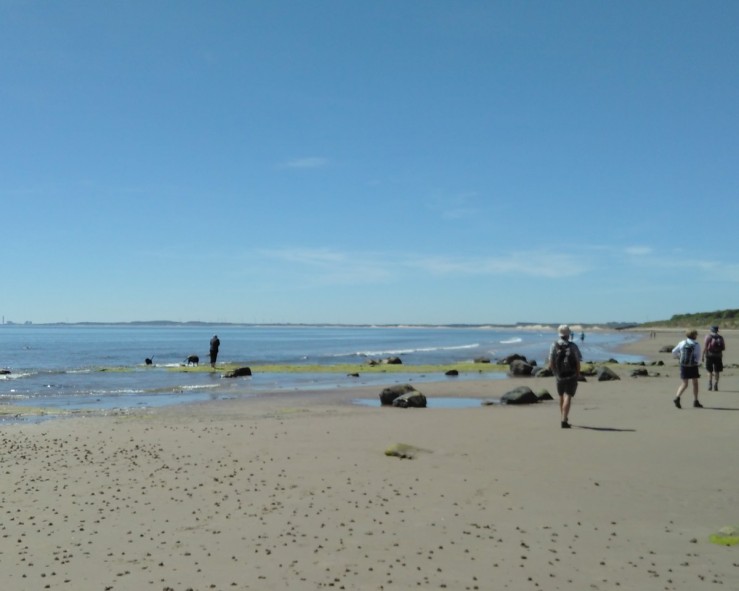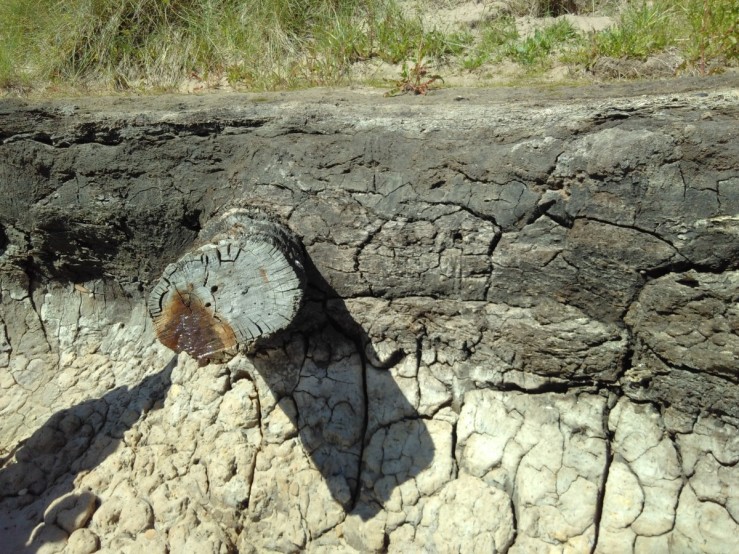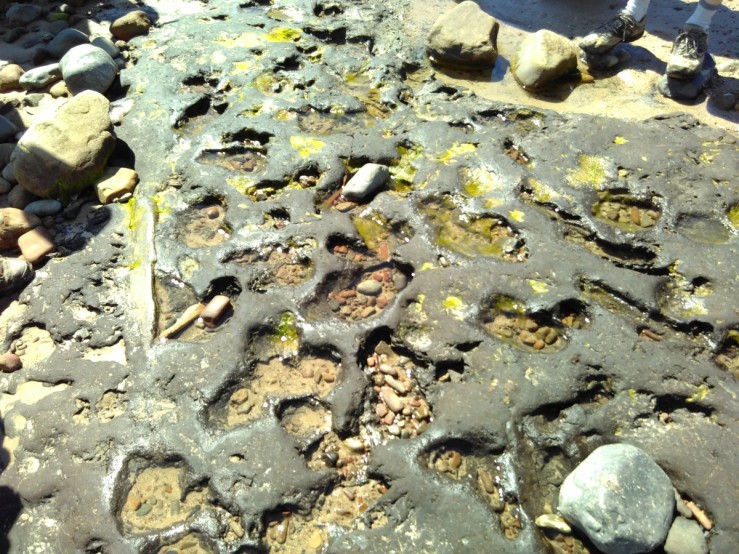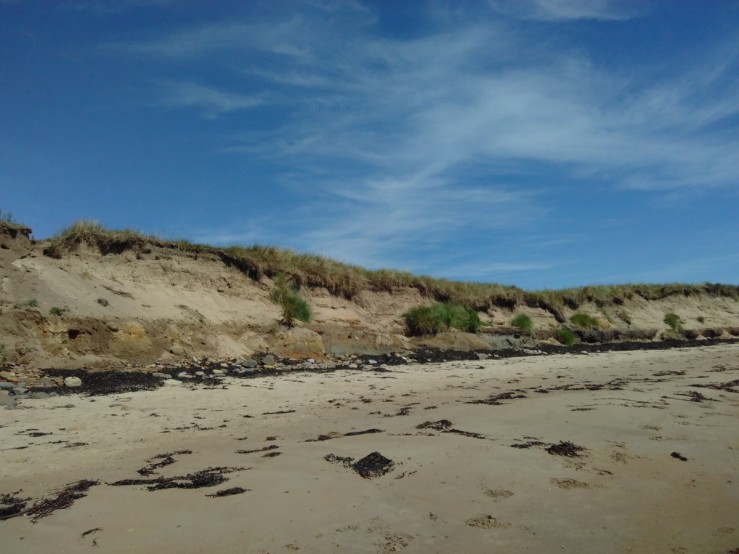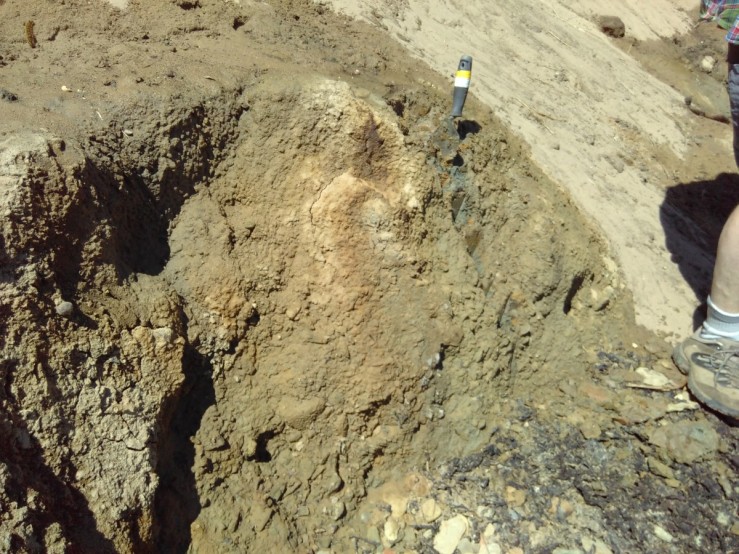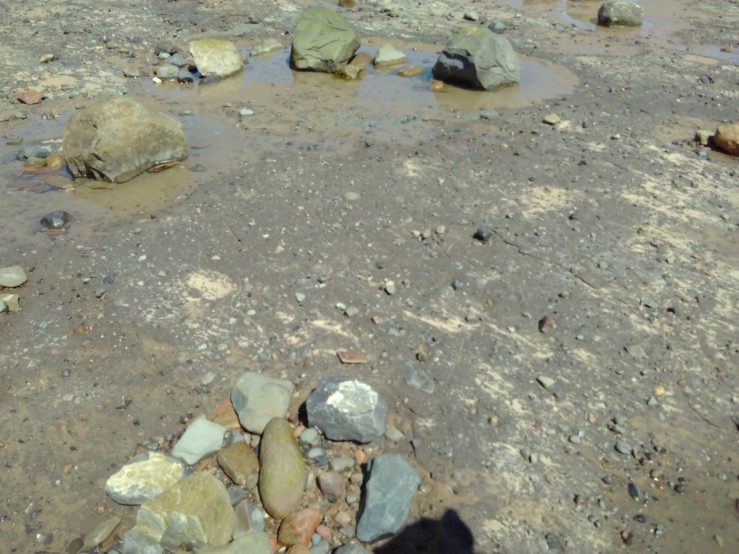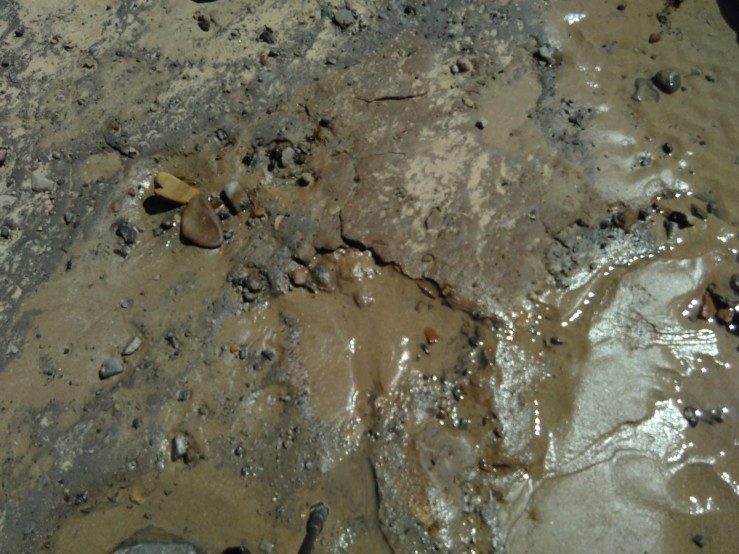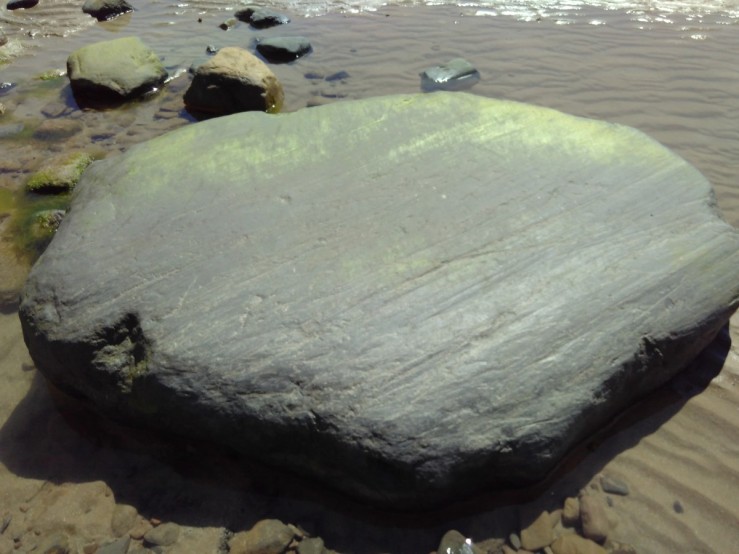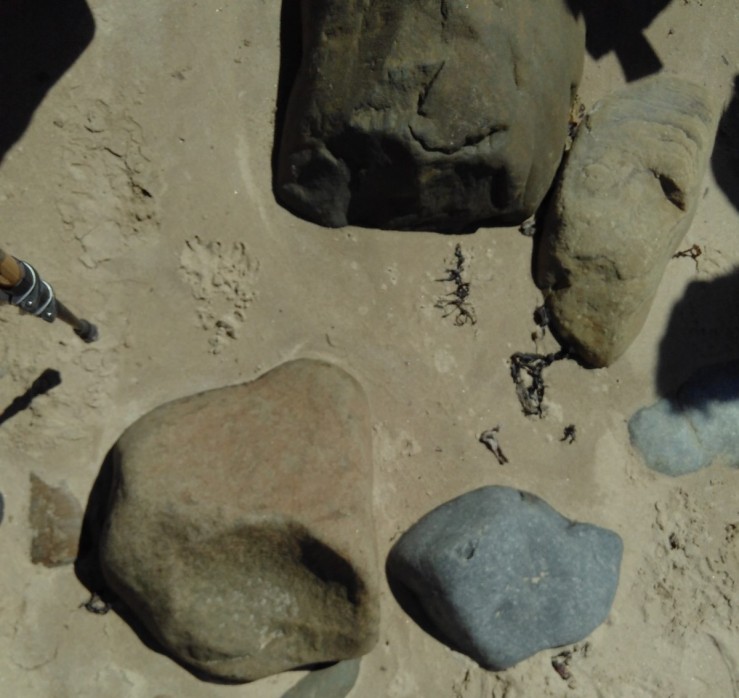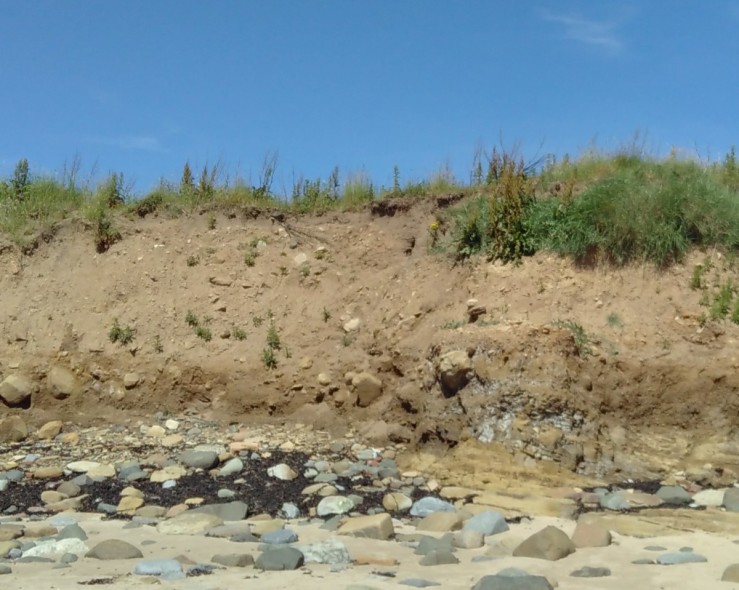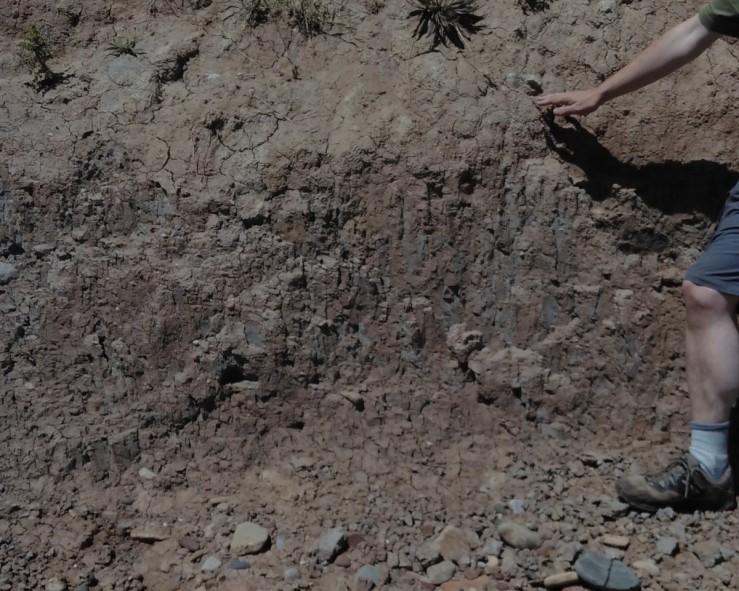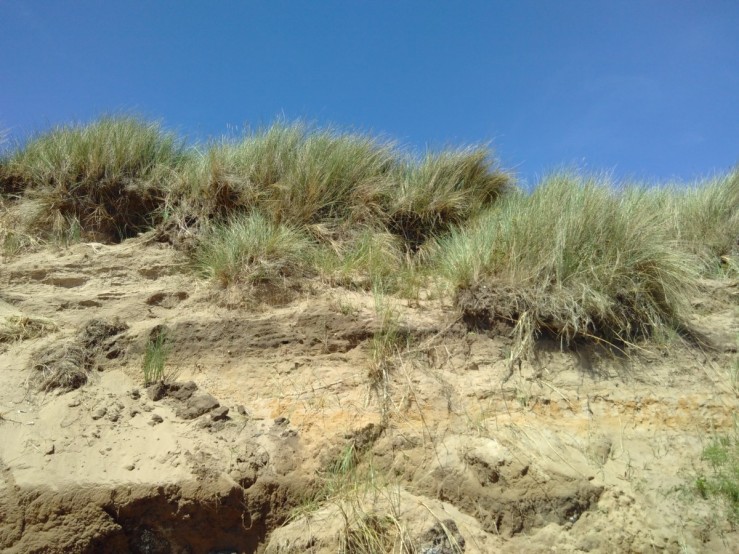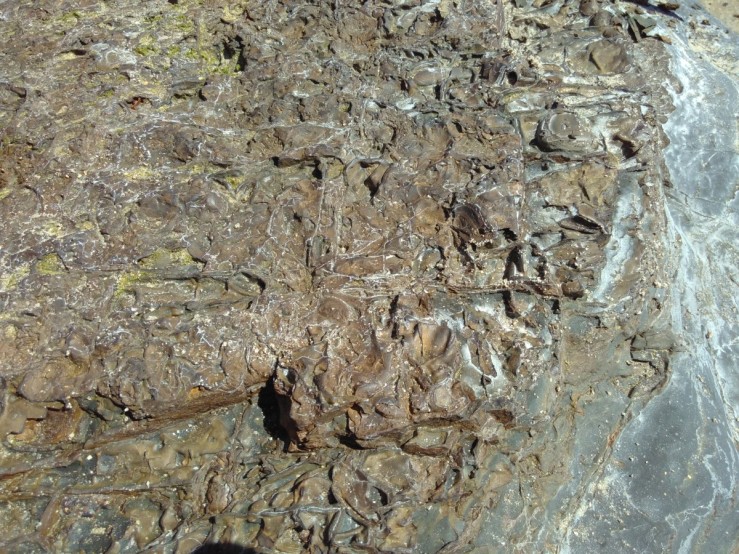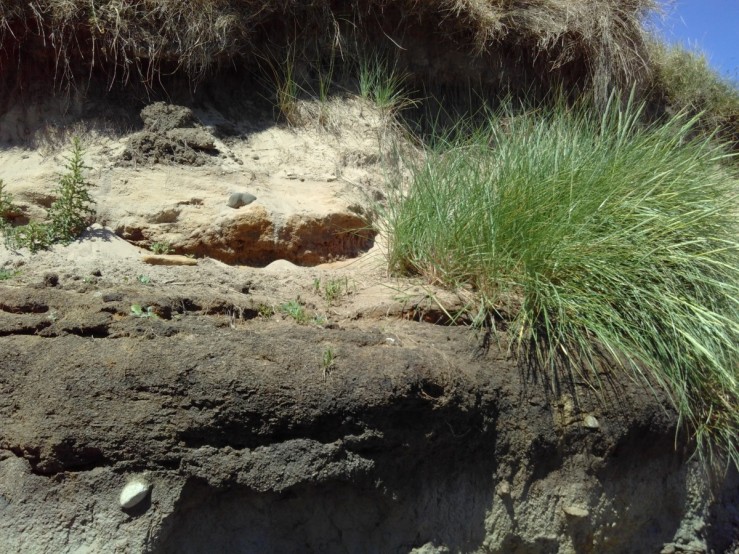The main aim of the outing was to examine and understand the geological context for the formation of the soils in the area. In the Carboniferous period (359 to 299 million years ago) the Great Limestone sequence was deposited across Northern England. Rothley Crags originated from the sediment of a large river that once flowed through Northumberland. The crags have been exposed by a series of geological faults running SW- NE and subsequent glaciation. From the top of Rothley Crags, the misty view below shows the agricultural field-scape, clearly different from the foreground rough grassland of the Crags. Bilberry and Bracken vegetation predominate on the exposed high ground of the grits. Typical acid plants like Climbing Corydalis and Tormentil were identifiable. 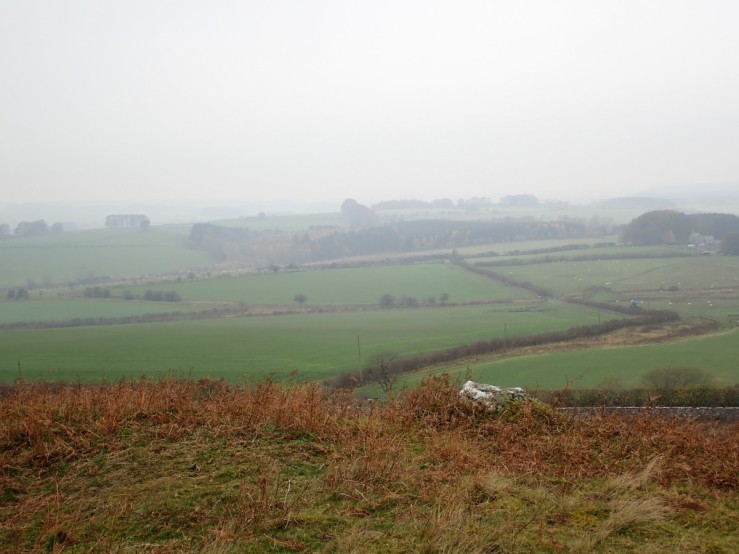
The influence of glacial processes of erosion and deposition can be deduced in the types of soil that we can see today such as clay and silt based loam.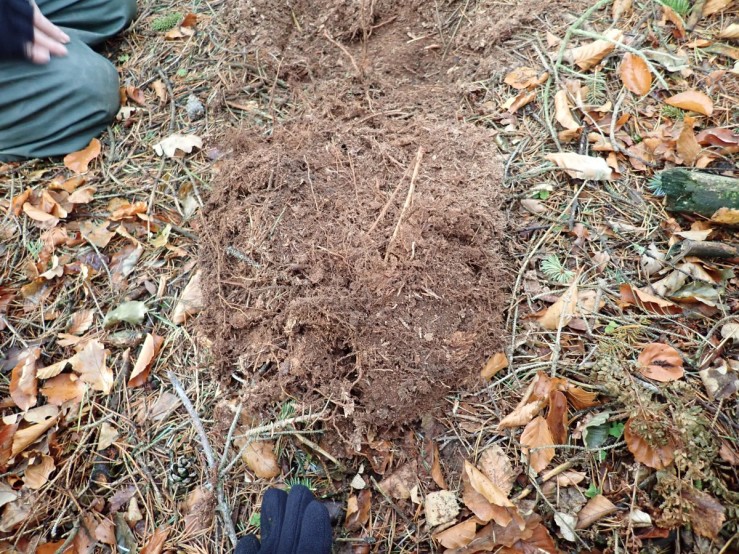
We dug a pit about one foot deep in a modern conifer plantation. The soil was dry Mor with a thick unconsolidated humus layer on top. Conifers like Norway and Sitka Spruce depend on fungal networks (mycorrhiza) within this layer to provide them with nutrients such as nitrogen. The fine roots in this layer had visible white mycorrhizal tips. A nitrogen supplying fungal associate, (Russula ochroleuca), was fruiting throughout the plantation. The soil was a shallow Ranker. Rankers are soils developed over non-calcareous material, usually sandstone rock. They are are often called A/C soils, as the topsoil or A horizon is immediately over the C horizon (parent rock) and lack a B horizon of leached material.
We moved on to test other areas area in the grassland on the approach to the Crags. The right hand core pictured below was from a wetter rushy area and the left from a drier section nearby. Both of these were well turfed with no unconsolidated humus litter on top. The wet core harboured several worms, common inhabitants of Mull soils. They both contained ABC horizons. The B horizon largely consisted mainly of clay and was gleyed in both cases. The greyish or bluey-grey colours and orange mottling are characteristic of gley soils but of secondary origin, replacing those inherited from the parent material. They result from the absence or very low levels of oxygen when iron compounds are changed chemically from their usual brown colours (reduction of ferric iron compounds to ferrous compounds). This layer had no roots visible. The C Horizon in both samples was of unconsolidated parent rock (sandstone). There was a more obvious gleyed horizon in the wet sample due to greater waterlogging.
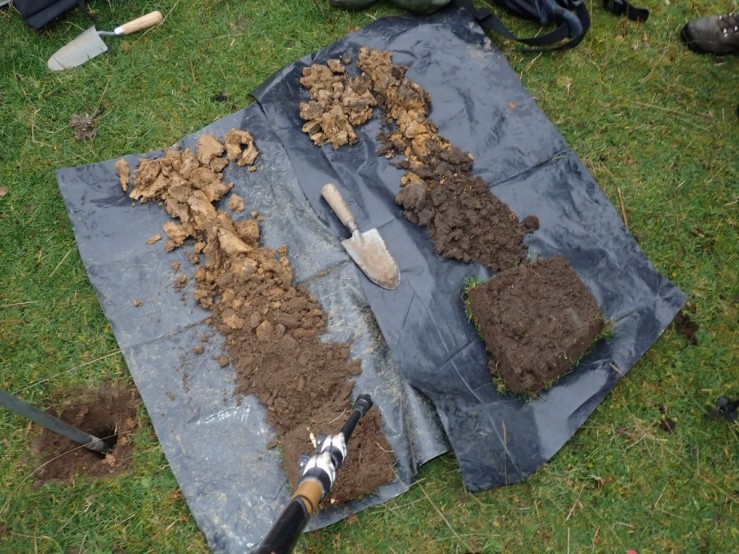
These fields were grazed by cattle and sheep and had been in use since probably late Neolithic/Bronze Age. Janet found evidence of this; a worked flint in the left hand core. The grassland was rich in fungi but mostly associated with the animal manure.
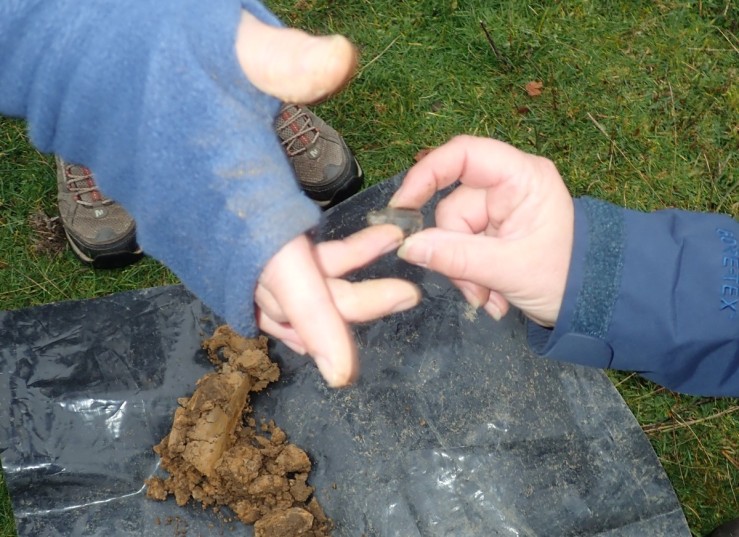
The moss and lichens on the sandstone crags formed intricate gardens of numerous species such as Cladonia sulphurina depicted below. C diversa, C polydactyla, C macilenta, C ciliata and C furcata were abundant. Crustose lichens such as Pertusaria coralina, Parmelia saxatilis and Acrospora fuscata were visible on the bare sandstone. Sphagnum mosses, such as S capillifolium and S palustre indicated the waterlogged soil conditions.
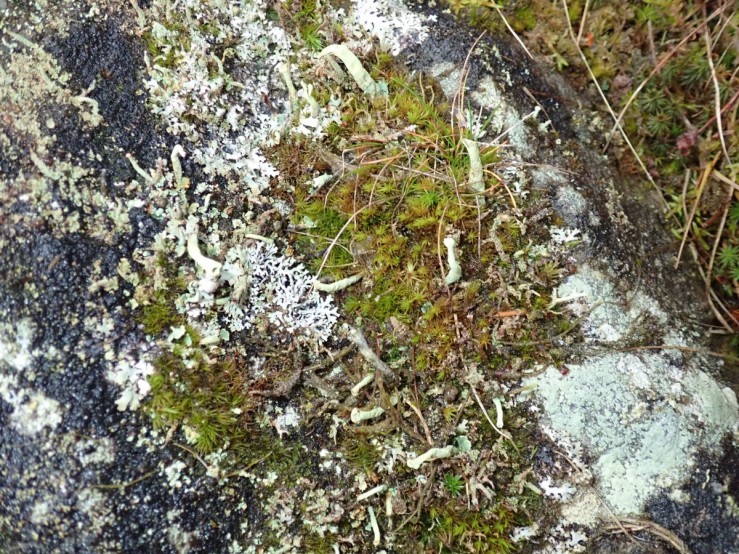
In Greenleighton Quarry the Great limestone was exposed in thick posts with thinly bedded shales between.
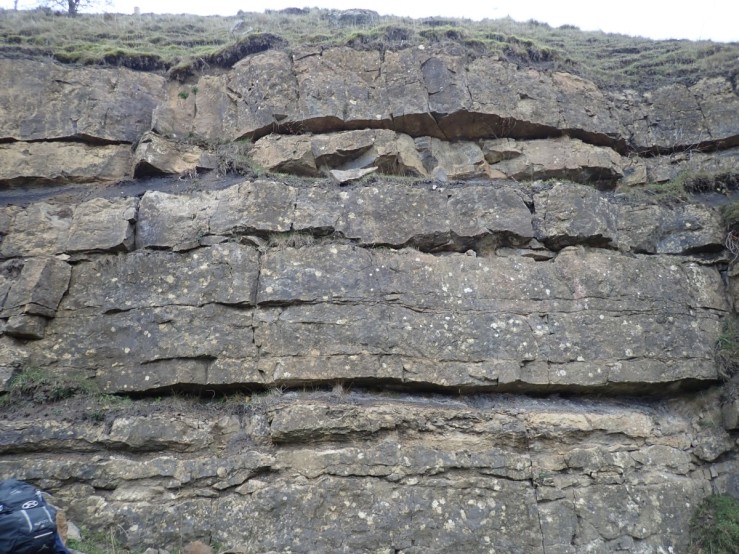
We augured a core from the field on top of the quarry. It was a thick Mull soil with ABC horizons showing little gleying. The deep brown A layer was thick and wormy. There were many large mole hills in the field suggesting a deep fertile soil. It had been cleared of large rocks at some time judging by the scatter on the wetter field below. A thin gleyed B horizon was present but unexpectedly there was no limestone in the C horizon. Unconsolidated pebbly sandstone and some stony material were sandstone. The field looked as if it had been improved since white clover and perennial ryegrass were predominant and fungi was scarce.
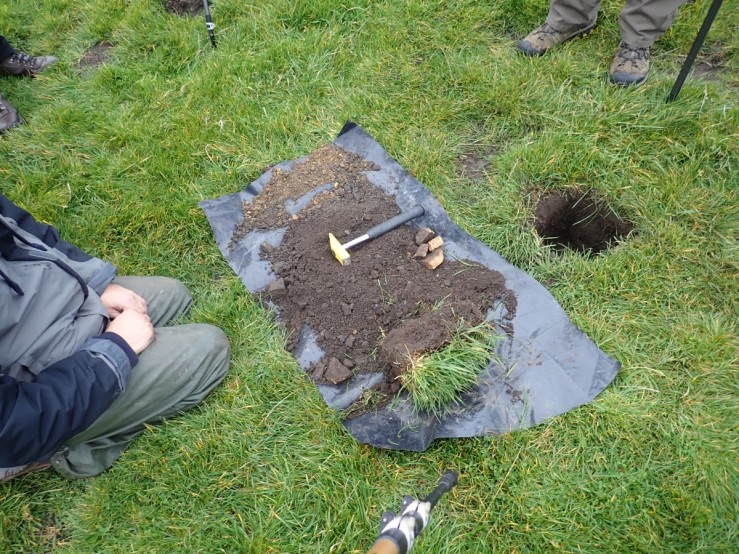
The quarry floor was rich in fossils found in tumbled rock including the type fossil of Pleuoplugnoides greenleightonensis, a carboniferous brachiopod pictured below in the shale.
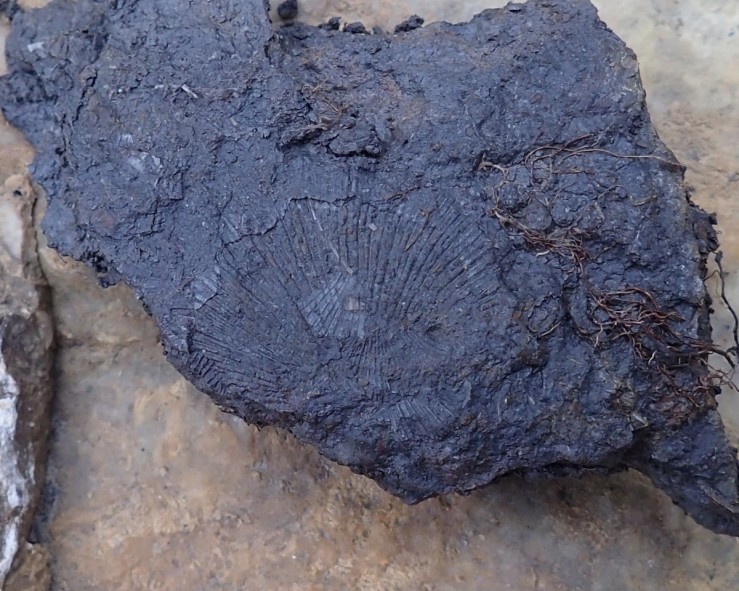
A broken mass of fossils below hints at the turbulent history of the shale, the chainmail like pieces are possibly the bryozoan (Fenestella plebeia).
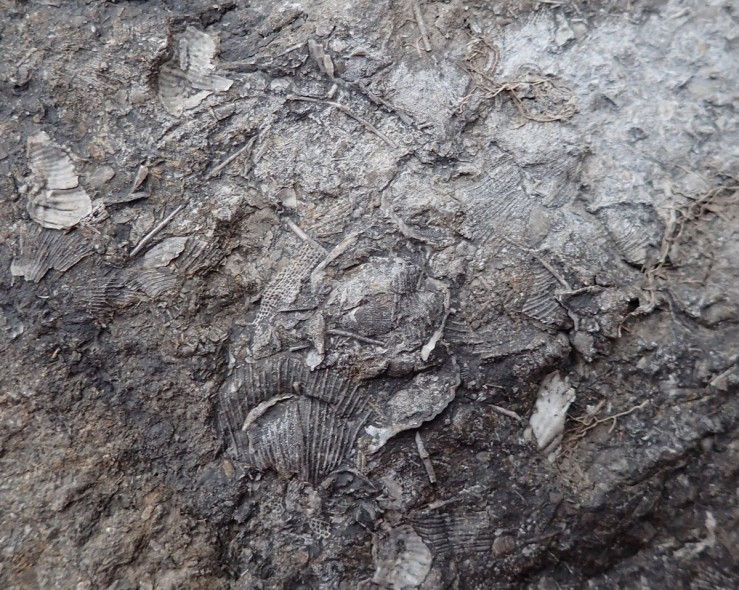
I was intrigued by these traces along this rock,
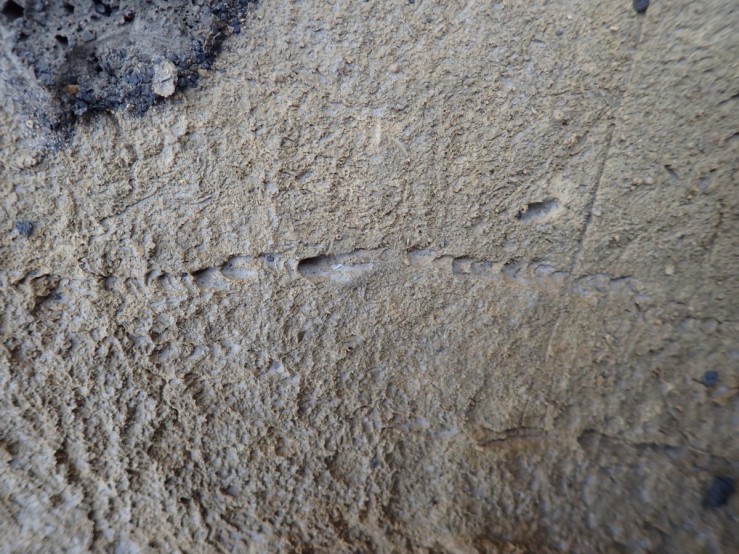
and this Echinoid fossil.
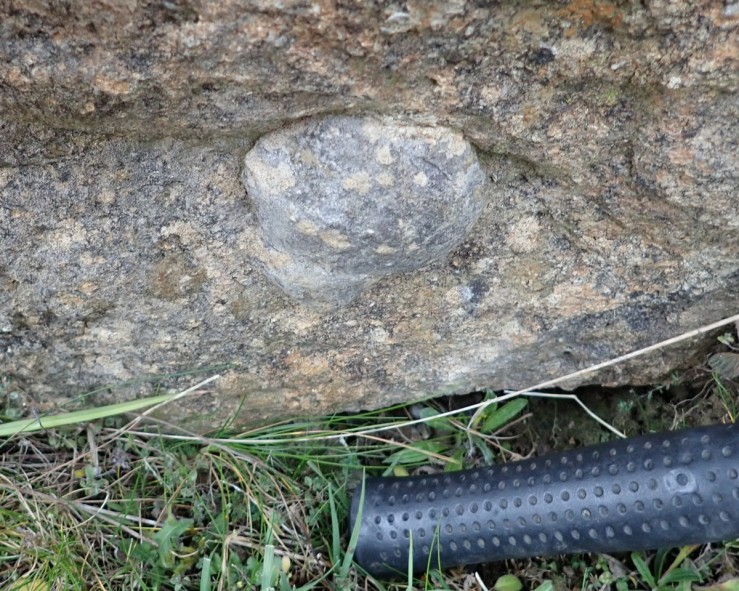
The species of moss and lichen were different here, reflecting the calcareous nature of the limestone rock. The crustose lichen, with marked pitting. is probably Verrucaria baldensis, a species common on hard limestone. The acrocarpous moss is Grimmia pulvinata.
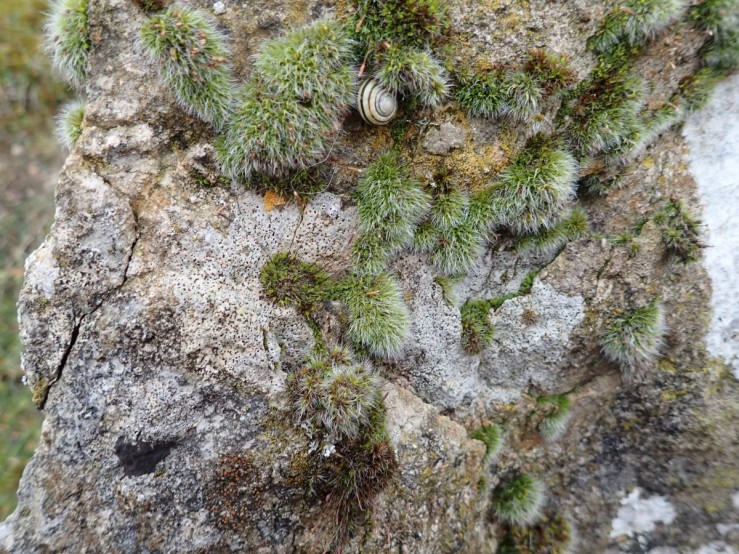
References: Mycorrhiza


































































































